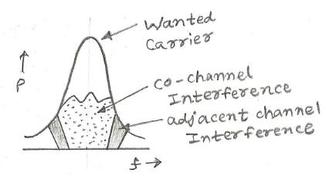In-Band vs. Out-Band Jamming: Understanding the Differences
Advertisement
This page details the difference between in-band jamming and out-band jamming. Jamming signals can originate from both in-band and out-band frequency sources.
In-Band Jamming

With in-band jamming, the jammer’s signal frequency is very close to the RF center frequency of the transmitter being tested. Figure 1 (above) illustrates this concept for a GPS transmitter.
In-band jamming signals are often caused by harmonics, bus systems, and other internal components.
Mitigation Strategies for In-Band Jamming:
To reduce the effects of in-band jamming or to avoid generating these signals, follow these steps:
- Maintain good grounding in the circuit design.
- Shield components as much as possible to avoid unwanted radiation.
- Perform proper layout optimization.
- Use filters (e.g., at the outputs of RF mixers or non-linear components) wherever needed.
- Place the GPS antenna very close to the circuit output port.
- For multimode modems, add band-pass filters (BPFs) before the handset antenna.
Out-Band Jamming

With out-band jamming, the jammer’s signal frequency is different from the RF center frequency of the transmitter under test. Figure 2 (above) depicts out-band jamming affecting a GPS transmitter.
Out-band jamming signals are often caused by nearby wireless transmitters from other systems such as GSM, WCDMA, LTE, WLAN, Bluetooth, etc.
To avoid out-band jamming generation, good grounding rules should be followed in the design. Additionally, filters such as SAW (Surface Acoustic Wave) or band-pass ceramic filters can be used at the antenna input of the GPS receiver.
Advertisement
 RF
RF



